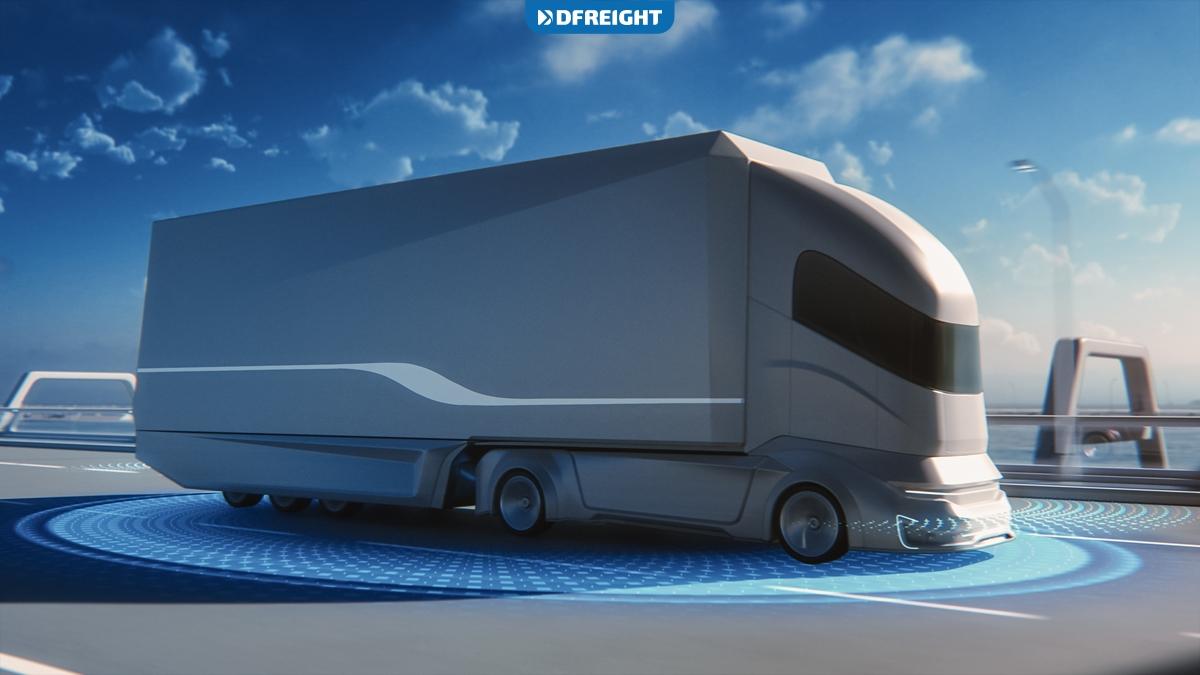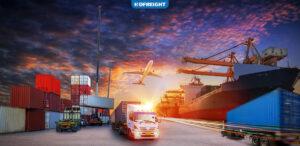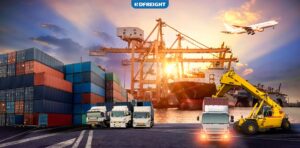Imagine you own a giant shipping and supply chain company with a marvelous massive fleet of autonomous trucks. You have made most of your drivers redundant and won’t need any longer to face the splitting headache of employing new drivers, complying with the latest labor laws, and scheduling them to adhere to regional and local rules and regulations. You just sit back, relax, and watch how your self-driving trucks move along the roads across the country or even the globe automatically round the clock. That’s the promising image that autonomous trucking will turn into reality shortly.
If you are curious about how this state-of-the-art novelty will revolutionize the world of transportation, stay focused on the post to get more enlightened.
Table of Contents
An Overview of Autonomous Trucks
Autonomous or self-driving trucks don’t require a human driver, making them an excellent facilitator of the shipping industry as the cargo-hauling equivalent of an autonomous car. Although some models of these self-driving trucks no longer allow for a human operator, they may still include a cab where a driver and passenger can sit. The capacity to handle vast volumes of cargo, such as shipping containers filled with commodities, is the critical continuous feature of an autonomous vehicle intended for shipment. Here, we’ll look at autonomous trucks’ basics, origins, and how they differ from self-driving cars.
Autonomous Trucks: How They Work
Many people associate “autonomous vehicles” with self-driving automobiles when they hear the word. However, autonomy is changing far more than just personal mobility. Commercial vehicles known as “autonomous trucks” employ artificial intelligence (AI) to automate anything from long-distance deliveries to activities in shipping yards. These intelligent trucks may be the first mass-produced self-driving vehicles to travel on public roadways due to industry challenges from increased delivery demand and driver shortages as well as simple operating areas like motorways.
This ground-breaking technology combines long-range, high-resolution sensors, a variety of deep neural networks, and high-performance, energy-efficient computation to increase the security and effectiveness of standard logistics. Data from sensors, usually cameras, lidars, and radars, is sent to a computer, which then steers the vehicle using knowledge gained via extensive practice and simulation.
Autonomous Trucks vs. Autonomous Cars
The difference between an autonomous car and an autonomous truck is that autonomous cars typically have a lower weight limit and are not built to tow as much as trucks. They also have less powerful engines and are not meant to drive for long periods. In principle, creating an autonomous truck could be simpler than creating an autonomous vehicle. This is because, in contrast to passenger cars, trucks—particularly long-haul tractor-trailers—typically adhere to defined routes and spend most of their time on motorways, which are much more predictable and navigable than surface streets.
With their big size offering more computing power and a broader field of view for sensors that can be installed higher off the ground, trucks are also a superior platform for autonomy. Therefore, trucks are much better suited for autonomy than cars for several reasons. First, they have more powerful engines and can thus handle longer journeys. Second, trucks have a lower weight limit, meaning they can carry more sensors and computing power. Finally, they can provide a broader field of view thanks to their height, meaning they can better avoid obstacles. These are all excellent indications that autonomous trucks will revolutionize the logistics industry in the future.
The Origins of Autonomous Trucks
A 1995 article regarding autonomous vehicles and their use in battle convoys appeared in Popular Science Magazine. These trucks still needed a human driver in the lead truck and depended on satellites and a guiding system. Later, the business underwent a tremendous expansion after the Japanese company Komatsu was the first to test five Ultra Class trucks in Chile in 2005.
Now, several sizable businesses are already offering autonomous trucks, and hopefully, one of the most recent travels covered more than 2800 miles and took 41 hours.
Key Manufacturers of Autonomous Trucks
The industry that manufactures autonomous trucks has a few significant participants, and an even larger number of smaller businesses support it by providing their auxiliary services. The considerable producers include Tesla, Volvo, Daimler, Embark, Einride, TuSimple, Waymo, and Nuro. These companies have been at the forefront of autonomous truck technology, and their products are currently the most advanced on the market.
They currently operate vehicles for several businesses across a range of shipping and logistics sectors. They also keep testing and enhancing their technology to stay ahead of the competition for increased reliability, productivity, and safety. According to certain self-driving truck firms, these vehicles will be deployed massively to key points for regional routes as early as 2024 or 2025.
Why Autonomous Trucking Matters
With the growth of e-commerce and next-day delivery, trucking is becoming more and more important in advancing global commerce. Trucks in the United States move over 70% of all freight. Experts predict that many businesses, mainly supermarkets and petrol stations, will run out of supplies without these trucks in a few days.
As the driver shortage intensifies, autonomous trucking becomes increasingly crucial. According to the American Trucking Association, throughout the previous 15 years, the shipping sector has had many driver supply issues. If the current trends hold, the industry may require 160,000 drivers by 2028. Additionally, the number of consecutive hours drivers work effectively inhibits operation.
By operating around the clock with less need for human labor, autonomous driving can help reduce the pressure of the transportation demand while also improving efficiency. In truth, a recent pilot study by the U.S. Postal Service and autonomous trucks company TuSimple revealed that autonomous trucks frequently arrived ahead of schedule on hub-to-hub routes. All these imply that autonomous trucking has the great potential to reduce traffic congestion and boost efficiency in the transportation and logistics industry.
Benefits of Autonomous Trucking
In a world where businesses need to transport more merchandise daily, autonomous trucks would enable firms to do so by using fewer or even no drivers. Some of the most significant benefits that autonomous trucking can bring for major players in the global game of shipping and transportation.
1. Higher Efficiency with Fewer Drivers
You won’t need a driver for each truck when employing an autonomous or self-driving one, which is the most significant advantage. The labor rules that apply to drivers vary depending on a number of criteria, and it may be difficult for businesses to stay on top of the regulations that apply to certain employees when it comes to overtime and total hours worked.
Human drivers are susceptible to illnesses and injuries that self-driving trucks are not, and these trucks have no cap on the number of hours they may work in a week. Considering that each vehicle won’t need a human occupant, businesses may also save on the expense of paying drivers.
2. Faster Trans-Coastal Shipping
Self-driving trucks do not need to take breaks or sleep as human drivers do on long trips. The only stops these trucks need to make are for fuel, and they can drive through bad weather just like ordinary cars. Recent cross-country trips with an autonomous vehicle showed that they are feasible and incredibly effective. By having the trucks travel more at night, this quality enables shipping companies to transport more cargo in a given amount of time and might even assist in easing daytime traffic.
3. Reduced Paperwork and Downtime
there is significantly less paperwork associated with autonomous trucks than with traditional, human-driven trucks. Also, these trucks require less maintenance and can travel farther distances than their human-driven counterparts, reducing emissions and carbon footprints. Moreover, self-driving trucks can be stored for any amount of time and run 365 days a year if properly maintained. This allows your company to ship products more quickly and efficiently, giving you a significant competitive advantage in the shipping and logistics industry.
4. More Safety and Security
Many huge cargo vehicles are involved in accidents yearly, which typically has unfavorable outcomes for all parties involved. Due to their lack of fatigue and redundant onboard computers that approve orders before the vehicle moves, autonomous trucks can lessen such incidents. These vehicles may also drive whenever they choose to escape traffic jams and congested locations. All these qualities boost the safety and security of the autonomous fleet and the land freight they move.
5. Smarter HR and Process Management
Shipping businesses may streamline their work schedules and change their personnel requirements to meet where their autonomous trucks go as fewer drivers are required. For instance, some enterprises direct their self-driving vehicles to a spot just outside a delivery address, and then a driver completes the trip from there.
Thanks to this combination of autonomous vehicles and drivers in critical locations, Deliveries may now be made to busier sites and places where more intricate maneuvers are needed. This also keeps staffing expenses low and upholds a suitable level of safety while executing extremely reliable deliveries. Autonomous trucking will reduce shift changes and the enormous challenge of scheduling drivers to adhere to regional and local rules and regulations.
Concerns About Autonomous Trucking
Concern over truckers’ jobs is one negative aspect many people have raised over the past years. Truckers fear that as technology advances, computers will replace more and more of them. Some analysts dispute this, arguing that the increased efficiency of trucking would boost demand and need the employment of a more significant number of qualified drivers, particularly at the beginning and end of challenging trucking trips.
The technology itself, as well as the legal ramifications of insurance and accident responsibility, are other significant concerns as well. Although the technology is presently being tested, it’s not apparent when it will start to gain traction. Even when it does, several problems surround crucial topics that remain unresolved: Who is legally liable if an autonomous truck causes a crash? Who is responsible if an autonomous vehicle kills someone? These are still open questions that could take some time to answer.
What are your thoughts about autonomous trucking? How do you think they’ll affect the world of transportation and supply chain? Do you think the advantages of this new wave of e-freight technology will supersede its probable drawbacks whatsoever? Feel free to share your thoughts with us in the comments.
FAQs
What are autonomous trucks?
Autonomous trucks are commercial vehicles that employ artificial intelligence (AI) to automate various tasks, such as long-distance deliveries and activities in shipping yards.
What are the benefits of autonomous trucking?
There are several benefits of autonomous trucking, such as higher efficiency with fewer drivers, faster trans-coastal shipping, reduced paperwork and downtime, more safety and security, and smarter HR and process management.
What are the concerns about autonomous trucking?
Some of the concerns about autonomous trucking include the potential loss of jobs for truckers, the technology itself, and the legal ramifications of insurance and accident responsibility.














